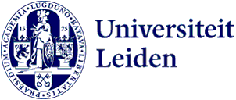Hubungan Ego Identity dengan Kecenderungan Perilaku Self Injury pada Siswa The Relationship Between Ego Identity and Tendency of Self-Injury Behavior in Students

Main Article Content
Abstract
The phenomenon in this study is motivated by the large number of students who are less able to build a good ego identity which causes identity confusion, resulting in negative behavior such as self injury. Self-injury is an act of intentionally hurting oneself without the intention of committing suicide, which is generally done to overcome emotional stress or feelings of emptiness. This study aims to describe students' ego identity and self-injury behavior, and the relationship between ego identity and students' self-injury behavior. This study uses a quantitative correlational method. The research sample was 130 students of State Senior High School 1 Sungai Tarab who were selected using the Purposive Sampling technique. The instruments used were an ego identity questionnaire and a self-injury behavior questionnaire. The data were analyzed using the percentage analysis technique and tested using the Pearson Product Moment correlation formula. The results of the study showed that: (1) the average score of students' ego identity achievement reached 91.71 (72.69%) most students had high ego identity, (2) the average score of students' self-injury behavior achievement was 52.42 (35.46%) most students had low self-injury behavior, and (3) there was a significant negative relationship between ego identity and students' self-injury behavior with a correlation of -0.277 and a significance value of 0.001. Thus, it can be interpreted that the higher the student's ego identity, the lower the self-injury, conversely, students with weak ego identity tend to have a higher risk of carrying out this self-injury behavior.
Downloads
Article Details

Authors retain copyright and grant the journal right of first publication with the work simultaneously licensed under a Creative Commons Attribution-NonCommercial-ShareAlike 4.0 International License that allows others to share the work with an acknowledgement of the work's authorship and initial publication in this journal.
References
Alfian, Ilham Nur. & Suminar, D. R. (2021). Perbedaan tingkat kebermaknaan hidup remaja akhir pada berbagai status identitas ego dengan jenis kelamin sebagai kovariabel terhadap mahasiswa Madura di Surabaya. Insan Media Psikologi, 5(2), 87–109. http://www.journal.unair.ac.id/filerPDF/02 Ilham, Perbedaan Tingkat Kebermaknaan Hidup Remaja Akhir.pdf
Alwisol. (2016). Psikologi Kepribadian. Malang: Universitas Muhammadiyah
Astuti. (2016). Dinamika Self-Harm Pada Remaja (Vol. 15, Issue 1).
Folastri, S., & Rangka, I. B. (2021). Prosedur Layanan Bimbingan & Konseling Kelompok (Issue November). https://www.researchgate.net/publication/320878276_Prosedur_Layanan_Bimbingan_dan_Konseling_Kelompok
Hakim, F. A., Syukur, Y., & Sukma, D. (2024). Layanan Bimbingan Kelompok untuk Mencegah Perilaku Self-Harm Group Guidance Services to Prevent Self-Harm Behavior. 7(2).
Jespersen, K., Kroger, J., & Martinussen, M. (2013). Identity Status and Ego Development: A Meta-Analysis. Identity, 13(3), 228–241. https://doi.org/10.1080/15283488.2013.799433
Mutiara Insani, S., & Ina Savira, S. (2022). Studi Kasus : Faktor Penyebab Perilaku Self-Harm Pada Remaja Perempuan Case Study: Causative Factor Self-Harm Behavior in Adolescent Female. Jurnal Penelitian Psikologi, 10(02), 439–454. https://doi.org/10.26740/cjpp.v10i2.53861
Muttaqin, D., & Ekowarni, E. (2017). Pembentukan Identitas Remaja di Yogyakarta. Jurnal Psikologi, 43(3), 231. https://doi.org/10.22146/jpsi.12338
Prastuti, A. P., & Taufik. (2014). Hubungan Antara Kecerdasan Emosi dan Problem Focus Coping Dengan Perilaku Delinkuen pada Siswa SMP. Jurnal Penelitian Humaniora, 15(1), 15–23. https://journals.ums.ac.id/index.php/humaniora/article/view/765
Prayitno. (2008). Dasar-dasar Bimbingan dan Konseling. Rineka Cipta.
Riduwan. (2009). Metode dan Teknik Menyusun Proposal Penelitian. Alfabeta.
Sari Permata, W., Taufik, & Sukmawati, I. (2016). Hubungan Konsep Diri Akademik Dengan Motivasi Berprestasi. https://Jurnal.Iicet.Org Volume 2 N(2009), 35–42.
Simatupang, L. O. G. (2019). Gambaran Kesepian Pada Remaja Pelaku Self Harm - CORE Reader. Fakultas Pendidikan Psikologi Universitas Negeri Jakarta, 1–276. Https://Core.Ac.Uk/Reader/324202740#Related-Papers
Subekti, C. A. (2016). Hubungan Antara Pola Pengasuhan Dan Ego identity Pada Siswa Smp Negeri 2 Somagede. In Jurnal Riset Mahasiswa Bimbingan Dan Konseling (Vol. 5, Issue 5). http://eprints.uny.ac.id/id/eprint/34301
Sumantri, M. (2018). Perkembangan Peseta Didik. Jurnal Pertumbuhan Dan Perkembangan Anak, 1(1), 1–52. https://bit.ly/2VT9PWh
Malang.Tarigan, T., & Apsari, N. C. (2022). Perilaku Self-Harm Atau Melukai Diri Sendiri Yang Dilakukan Oleh Remaja (Self-Harm or Self-Injuring Behavior By Adolescents). Focus : Jurnal Pekerjaan Sosial, 4(2), 213. https://doi.org/10.24198/focus.v4i2.31405
Taufik, & Putriani, L. (2023). Pendekatan Dalam Konseling. Padang: Tahta Media Group.
Find the perfect home for your research! If this journal isn't the right fit, don't worry—we offer a wide range of journals covering diverse fields of study. Explore our other journals to discover the ideal platform for your work and maximize its impact. Browse now and take the next step in publishing your research:
| HOME | Yasin | AlSys | Anwarul | Masaliq | Arzusin | Tsaqofah | Ahkam | AlDyas | Mikailalsys | Edumalsys | Alsystech | AJSTEA | AJECEE | AJISD | IJHESS | IJEMT | IJECS | MJMS | MJAEI | AMJSAI | AJBMBR | AJSTM | AJCMPR | AJMSPHR | KIJST | KIJEIT | KIJAHRS |





















